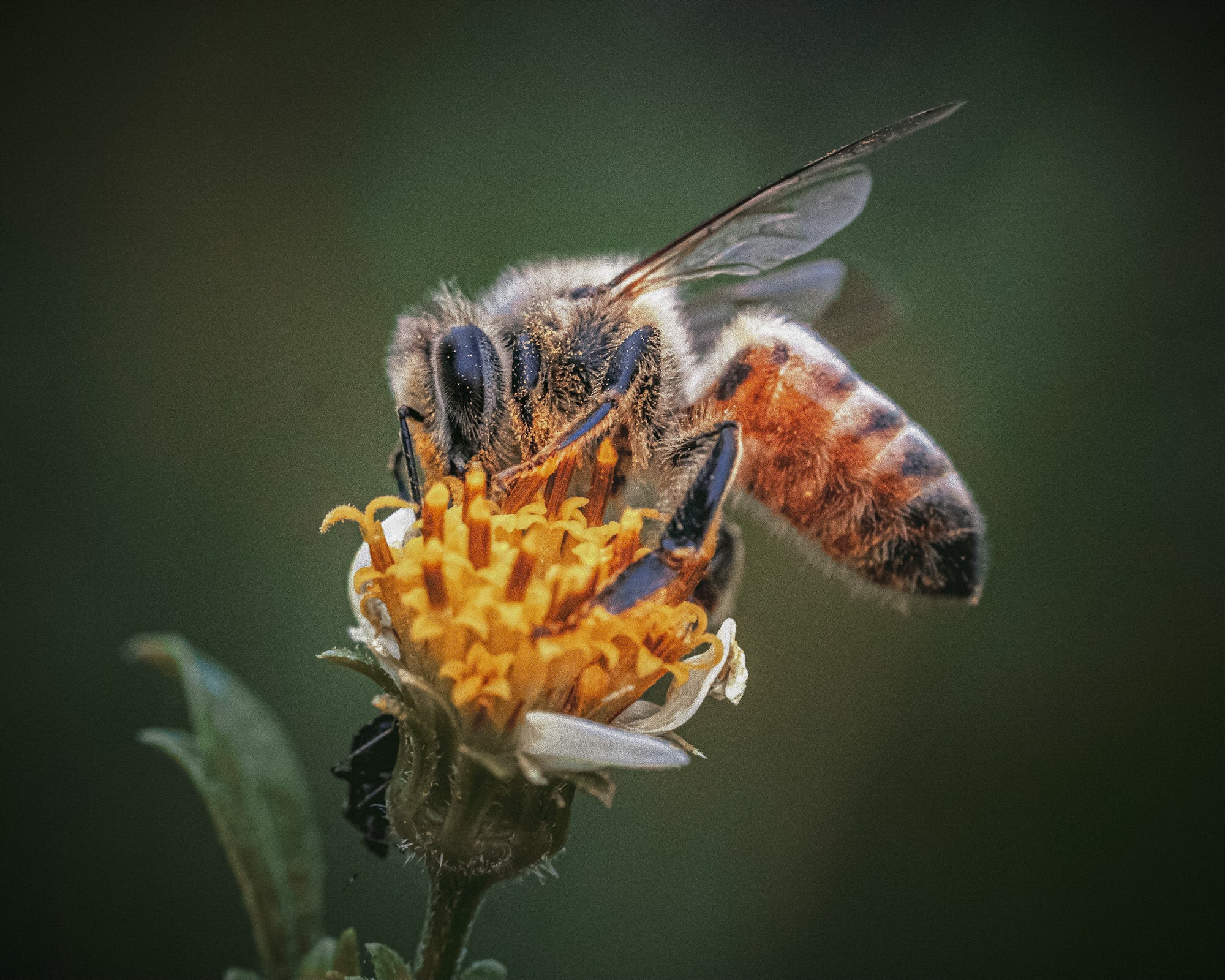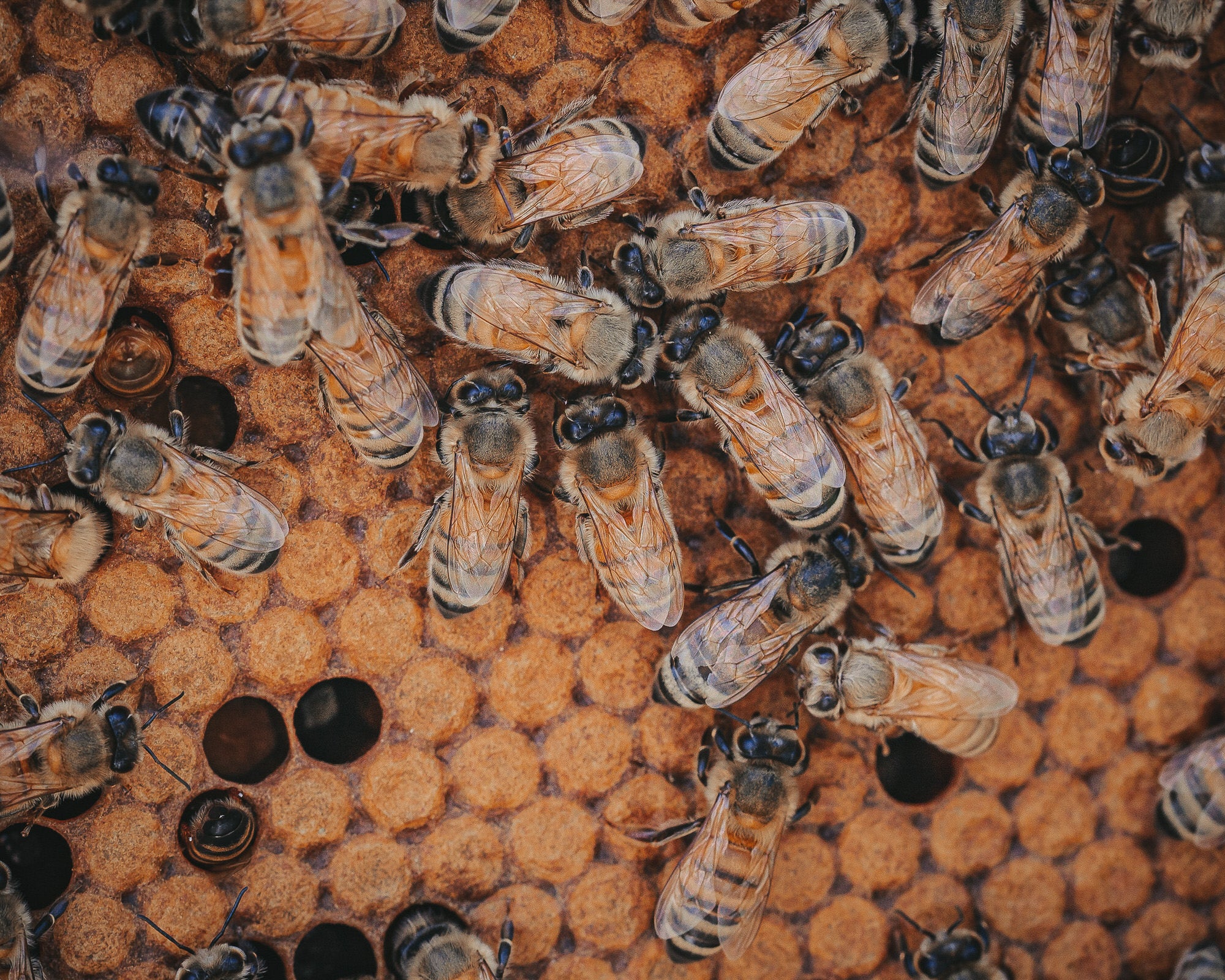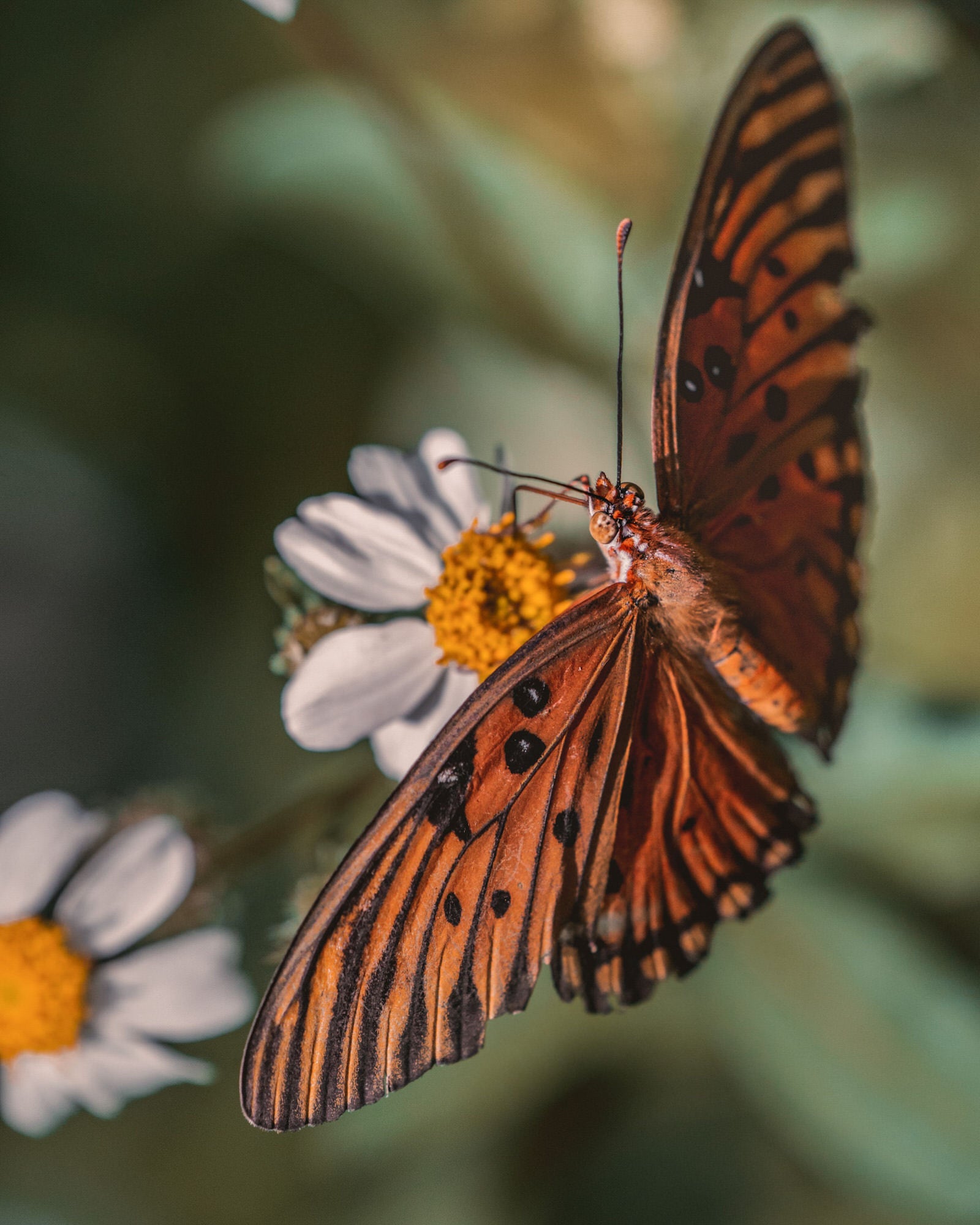For her Alpha Female+ grant, photographer and naturalist Hannah Mather put the focus on pollinators. Including these vital insects into conversations and action plans for sustainability is critical and Mather sought to inspire with words and images about these tiny, yet essential creatures. Shooting with the Sony Alpha 7 III, Sony Alpha 6400 and the 90mm f/2.8 Macro G lens, Mather gives us an incredible look at backyard pollinators.
Bees have an amazing ability to connect. They connect pollination networks between plants allowing them to reproduce, but they also connect people. Their complex social structures and unique behaviors will amaze anyone who is lucky enough to witness them. They’re strong and resilient creatures, yet at the same time are teetering on a delicate tight-rope against the impacts of climate change, habitat loss, and widespread pesticide usage. A true reflection of the complexities of nature all packed inside of tiny, buzzing bodies.
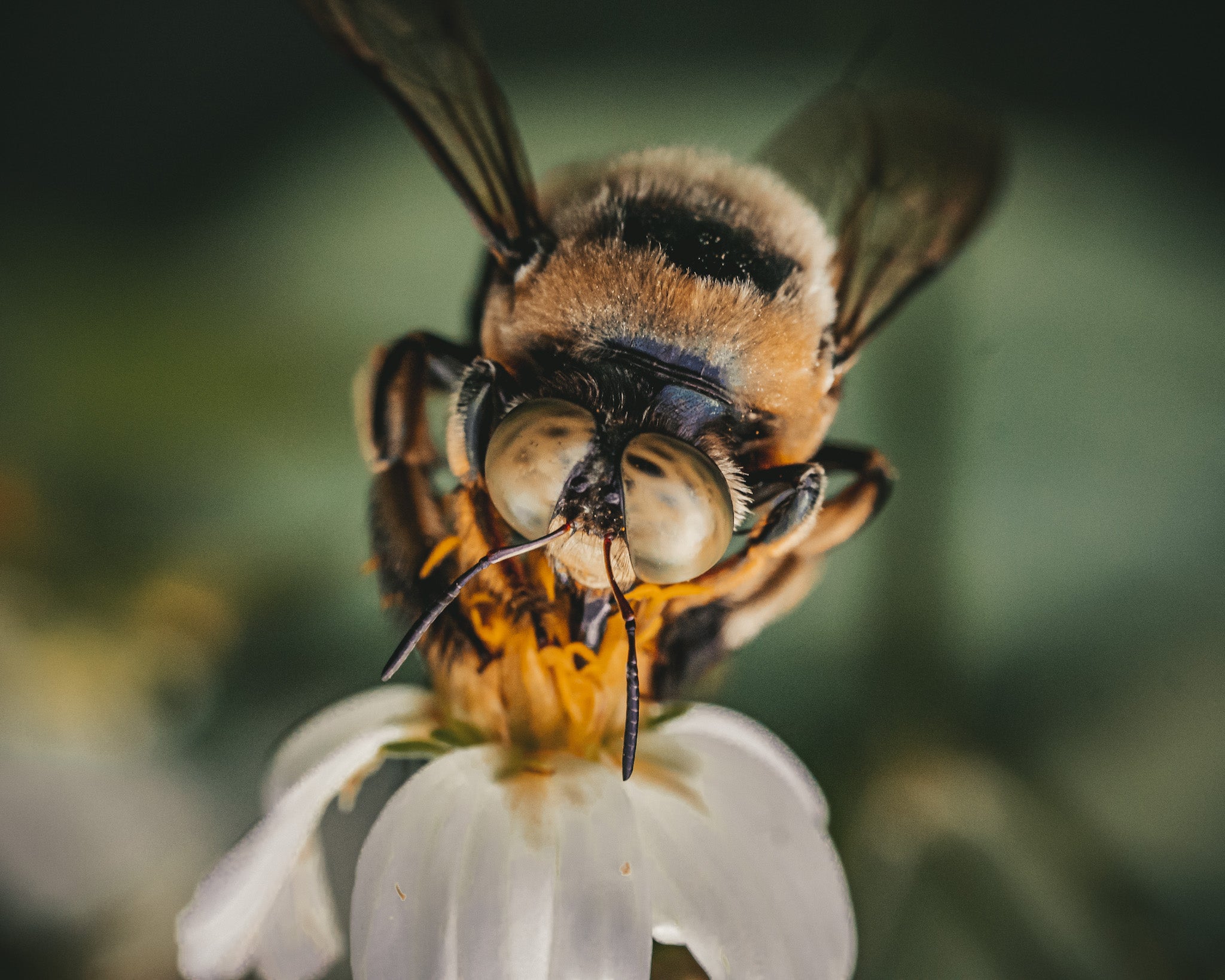
Photo by Hannah Mather. Sony α6400. Sony 90mm f/2.8 Macro G. 1/800-sec., f/7.1, ISO 3200
Insects have fascinated me since I was a child. Many hours were spent in front of the honey bee observation hive at the museum my family frequented, where I’d spew out facts about them to anyone who got close enough to listen. It was always on my bucket-list to have hives of my own, though for a while, more realistic dreams and academic expectations bumped it down the list. When the opportunity finally arose, it felt like meeting an old friend. The bees have changed my perspective and my life, and it’s become my passion to share the lessons they’ve taught me with the help of macro-photography.

Alpha Female+ Grant Winner Hannah Mather
The world of bees opened my eyes to the countless plant-animal interactions that our eco-systems rely on, and it shocked me to realize how many of us are completely unaware of how much their lives hang in the balance every day and that so many amazing pollinators are facing the same fates. The honeybee is only one of over 20,000 species of bees, and bees aren’t even the only pollinators. There are butterflies, moths, beetles, flies, even some bats and birds among the most important. Many of these species evolved right alongside specific plants, their life cycles so intertwined that they rely on each other for each step along the way. As these cycles get broken, whether by plants being mowed, insects being sprayed, or migration networks being fragmented, we risk huge losses in biodiversity all the way up the food chain. Insects pollinate plants, which humans and animals alike rely on, but they’re also food themselves for larger predators. The actions we can do to help pollinators directly aid in conservation of all wildlife. Unfortunately, considering their vast impact, insect interactions are an under-funded, under-researched, and under-appreciated field. Even with concrete data and acknowledgment that they meet endangered species criteria, insects are usually not prioritized for protection, such as the case of the monarch butterfly (FWS Monarch Statement ).
Fortunately, there’s still a lot we can do to change the trajectory of pollinators right from home. Simple mindset shifts with the way we landscape make huge, tangible impacts. When we choose to use nectar-rich native wildflower species instead of our sterile mowed lawns and imported, often invasive, landscaping plants, we not only provide habitat and food for wildlife, but we also reduce water usage and increase carbon absorption. Whether it’s your yard, a small flowerpot on a windowsill, or even just overgrown weeds on a roadside median, nature is buzzing all around us in many forms. If you slow down enough to give it a chance to impress, you may just find something worth protecting.
It’s in our nature to fear what we don’t understand while we fight fiercely to protect what we do, so noticing and learning about local pollinators is where conservation must begin.
The following are just a few of the pollinators found around my own home. Imagine what might be near you!
Bees
European Honeybee, Apis mellifera
As the quintessential pollinator of agriculture, honeybees are usually the first that come to mind. Honeybees are generalist pollinators, which means you can find them on a wide variety of flowers. Their favorites tend to be flowering trees and shrubs where they can get the most “bang for their buck” with many flowers in a small space. If you can find groups of blooms, honeybees are probably around!
Photo by Hannah Mather.
Honeybees have a complex social structure which allows them to create densely populated colonies. A large hive during peak season can contain more than 60,000 bees! With their large populations and well-established history of domestication, honeybees have landed themselves a hugely important role in modern agriculture.
One might think that the honey they produce is what makes them so valuable, but it’s pollination services that form the bulk of their economic impact here in the United States. With insect pollination contributing over 20 billion dollars to the US economy each year through the increased crop yields they create, farmers eagerly hire commercial beekeepers to bring colonies onto their farms during bloom times. This complex relationship has led to an industry of migratory beekeepers traveling the country from crop to crop in some mind-boggling numbers. The largest pollination event of them all is the almond bloom, with over 2 million hives brought into California by the truckload every February. That’s nearly 75% of all of the managed hives in the country.
Photo by Hannah Mather. Sony α7 III. Sony 90mm f/2.8 Macro G. 1/320-sec., f/7.1, ISO 640
While the need for honeybees is clear and proven, it can be more complex than what meets the eye. Many people are surprised to find out that honeybees are not native to North America at all, instead they were imported from Europe in the 1700’s. So, is our reliance on honeybees in agriculture perhaps filling a void left by unsustainable practices that have depleted our native pollinator populations? The consequences of widespread pesticide usage, habitat loss, and climate change have led to alarming declines among many species that suggest it’s likely the case.
Photo by Hannah Mather. Sony α6400. Sony 30mm f/3.5 Macro. 1/400-sec., f/5.6, ISO 400
While honeybees do face the same stressors, they have the advantage of human intervention on their side. The other thousands of native bee species are left to fend for themselves.
Metallic Green Sweat Bee, Agapostemon splendans
Some of my favorite native bees to see out and about are metallic green sweat bees. There are about 40 different species that fall under this category, the ones shown here are Agapostemon splendans. These bees are important pollinators of wildflowers, stone fruits, sunflowers, and alfalfa. They are part of the 70% of all bees who build their nests underground. When considering pollinator conservation, keep in mind all parts of their life cycle and leave some bare ground access and areas untilled where they can lay the next generations.

Photo by Hannah Mather. Sony α7 III. Sony 90mm f/2.8 Macro G. 1/1000-sec., f/3.5, ISO 100
These bees are slightly smaller than honeybees, and much quicker. The male and female are easily distinguishable from one another by their different abdomen coloration. To get a good shot of these, find a wildflower patch that they are frequenting, and make yourself comfortable. After observing for a bit, you’ll notice patterns of which flowers they repeatedly stop at. Home in on one of those and wait patiently for that perfect shot.
Photo by Hannah Mather. Sony α7 III. Sony 90mm f/2.8 Macro G. 1/1000-sec., f/4.5, ISO 320
Southern Carpenter Bee, Xylocopa micans
Carpenter bees are one of the most misunderstood of our flying friends. Often thought of as a pest, they’re actually important pollinators! Similarly to bumblebees, they’re able to use “buzz-pollination” to help flowers with specific needs release their pollen. Food crops that rely on buzz-pollination include tomatoes, eggplants, blueberries, and more.
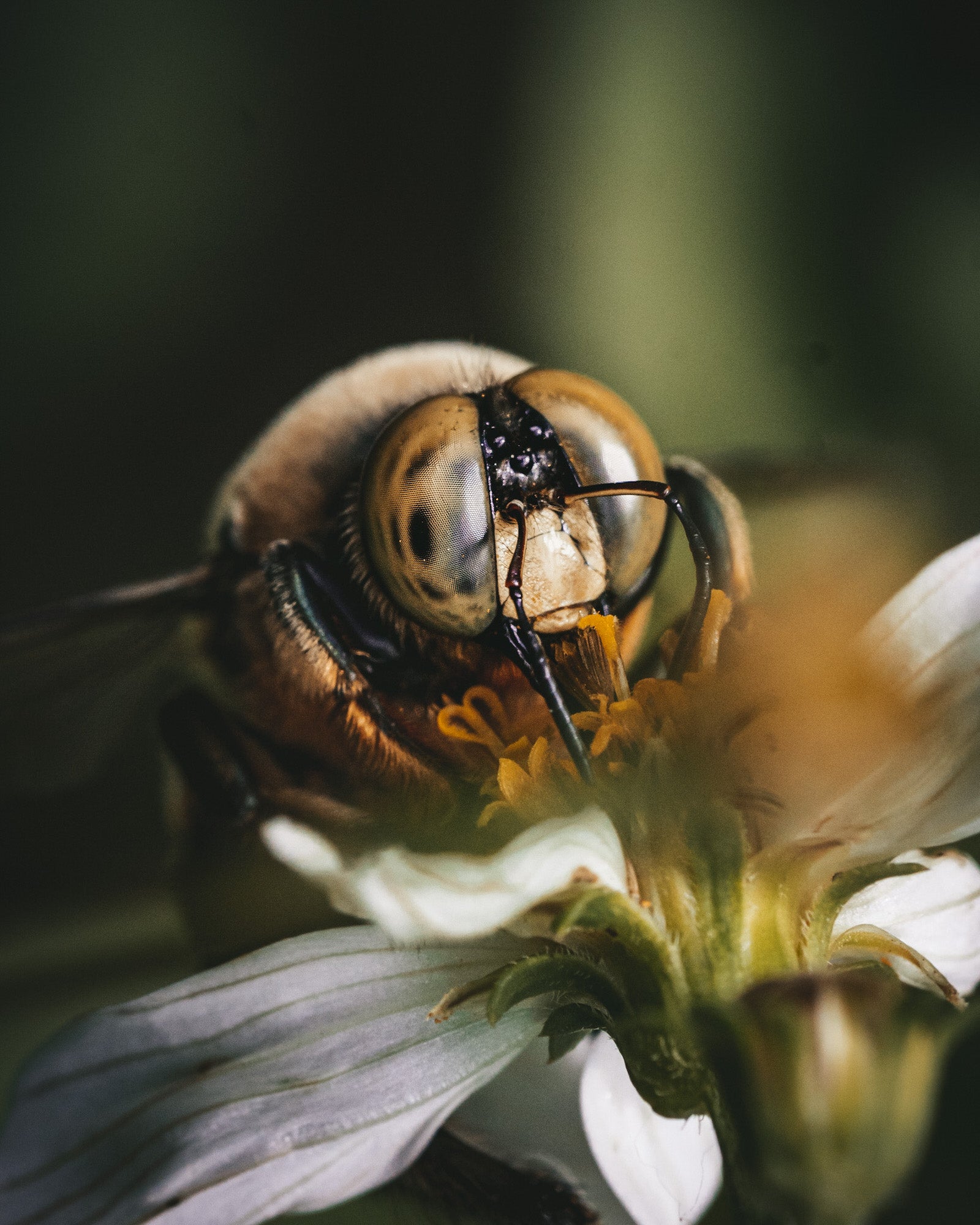
Photo by Hannah Mather. Sony α6400. Sony 90mm f/2.8 Macro G. 1/800-sec., f/7.1, ISO 1250
Due to their habits, you’re most likely to accidentally encounter the males, who despite their large size and intimidating look, don’t have stingers at all! These gentle giants do tend to be territorial, and often give people a fright by “bumping” them when they get too close to their female’s nest. They’re all bark and no bite though, so walking away is typically all you need to do. While the more elusive females do have stingers, their stings are still rare and typically only happen while being handled.
Some species can occasionally become a minor nuisance if they choose an inconvenient nesting site, but luckily there are some easy fixes that won’t harm them. Since they prefer dry/untreated wood, painting anything you want to protect, while also leaving a small pile of wood debris somewhere nearby is often enough to live in harmony. If all else fails, a simple wind chime should do trick to get them to leave, as they hate the vibrations!
Photo by Hannah Mather. Sony α6400. Sony 90mm f/2.8 Macro G. 1/1250-sec., f/4.5, ISO 500
Bees are considered the most efficient pollinators, but they’re not the only insects with flower-power! When you plant for pollinators, you’ll also be rewarded with a front row seat to the most conventionally beautiful of all the insects, butterflies.
Butterflies
Butterflies are famous for their dramatic metamorphosis from larval caterpillar to beautiful flying adult, but how many people could identify the larval stage of their favorites? This larval/caterpillar stage is when butterflies are most vulnerable, whether that’s from pesticides, disease, or predators. Only a very small percentage will make it to adulthood. The secret to bringing butterflies into your yard, in addition to planting nectar rich flowers, is to grow larval host plant species where they can safely eat and grow.
One of these important host plants here in Florida is the Passionflower vine, which in addition to striking blooms also provide food for the larvae of the zebra longwing and Gulf fritillary.
Gulf fritillary, Agraulis vanillae
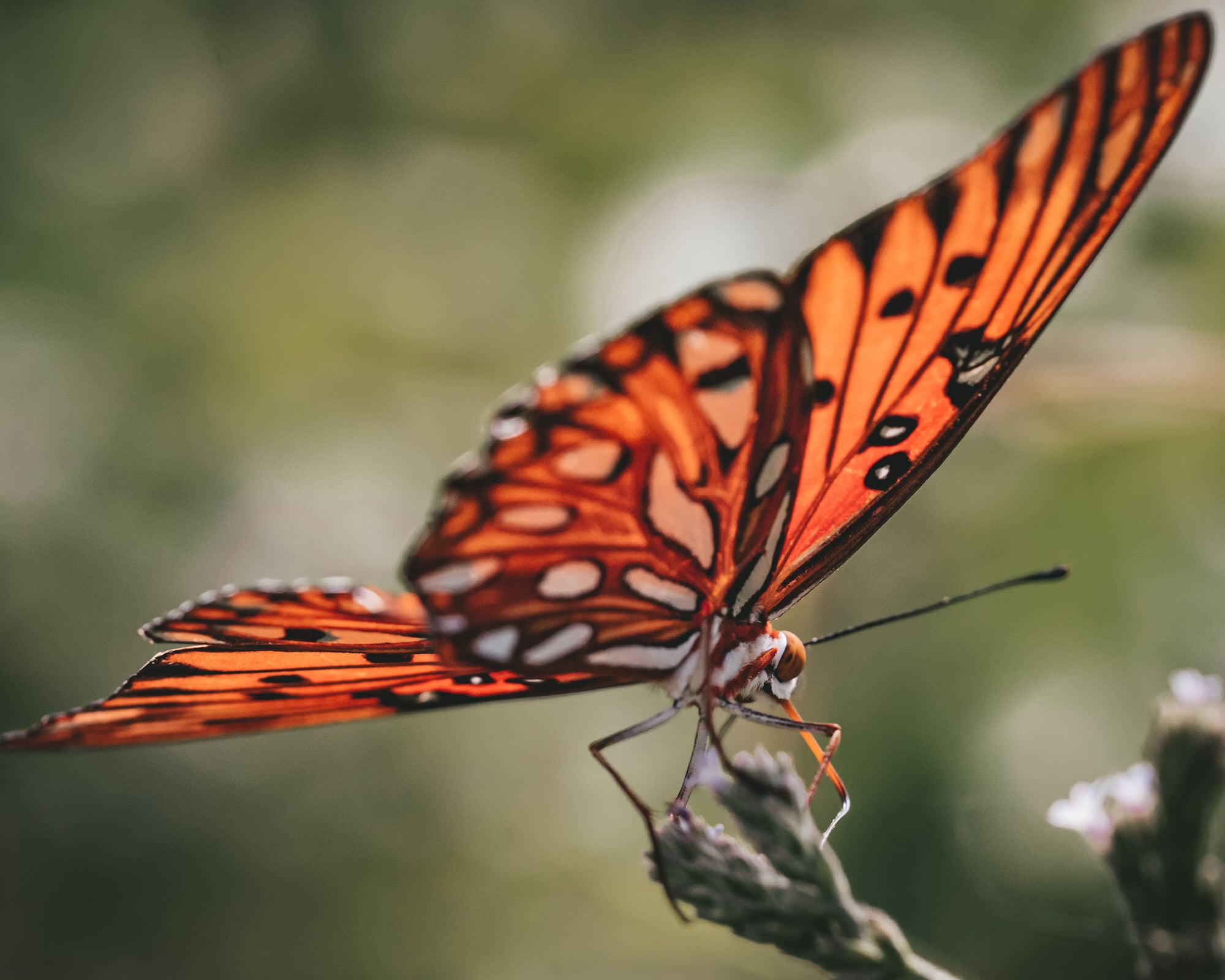
Photo by Hannah Mather. Sony α6400. Sony 90mm f/2.8 Macro G. 1/640-sec., f/5.6, ISO 800
Photo by Hannah Mather. Sony α7 III. Sony 100-400mm f/4.5-5.6 G Master. 1/1600-sec., f/7.1, ISO 1250
Zebra longwing, Heliconius charithonia
Zebra longwings are the state butterfly of Florida, and they’re unique in a few note-worthy ways. While most adult butterflies only feed on nectar (the sweet, sugary liquid found inside flowers), zebra longwings are also able to consume protein-rich pollen by dissolving it in their saliva! This might not sound like a big deal, but this dietary change allows them to live much longer lives than their relatives. They’re also very intelligent, taking the same foraging routes every day and returning to roost in groups at night, where they even have a social order and hierarchy!
Photo by Hannah Mather.
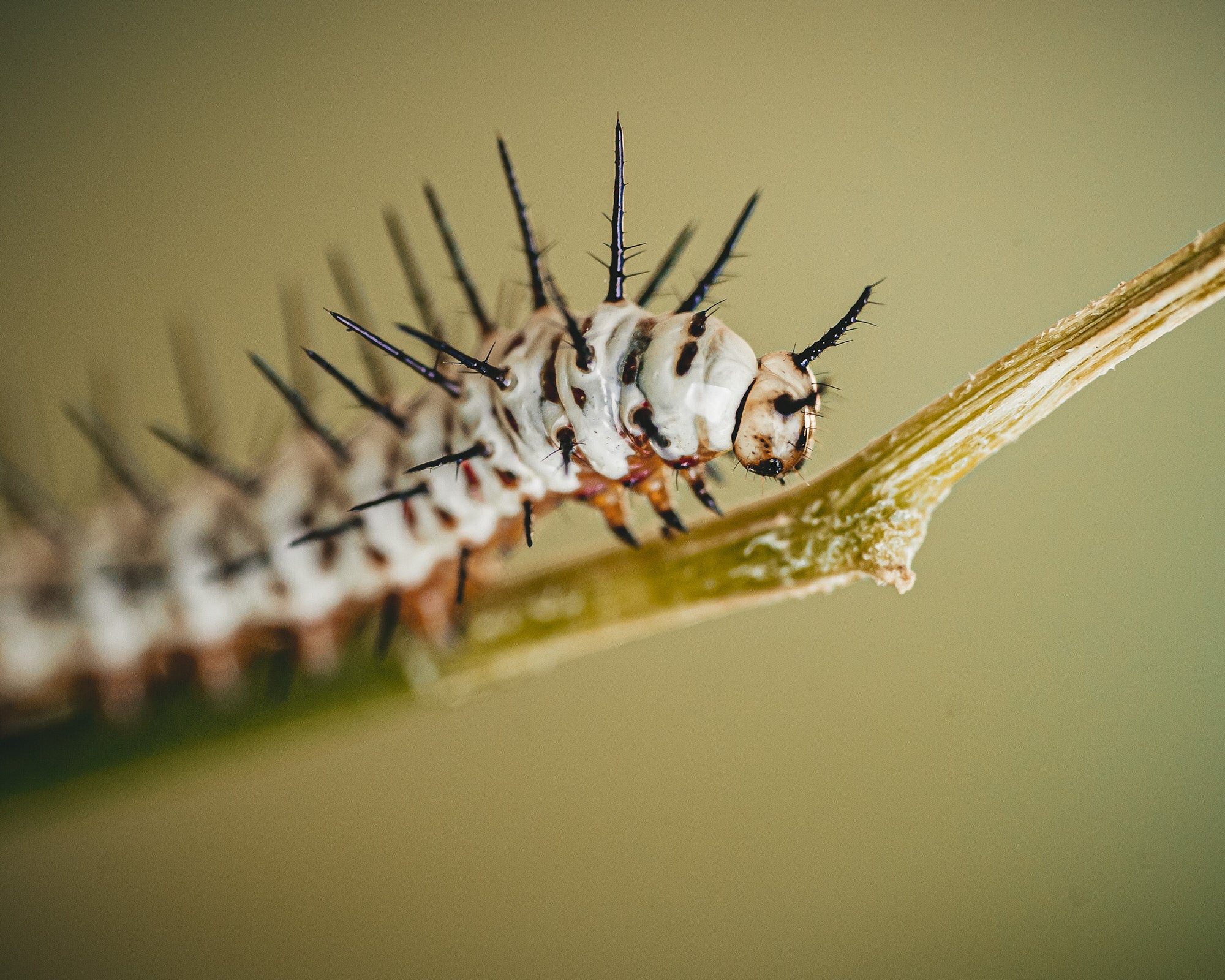
Photo by Hannah Mather. Sony α7 III. Sony 90mm f/2.8 Macro G. 1/200-sec., f/4.5, ISO 800
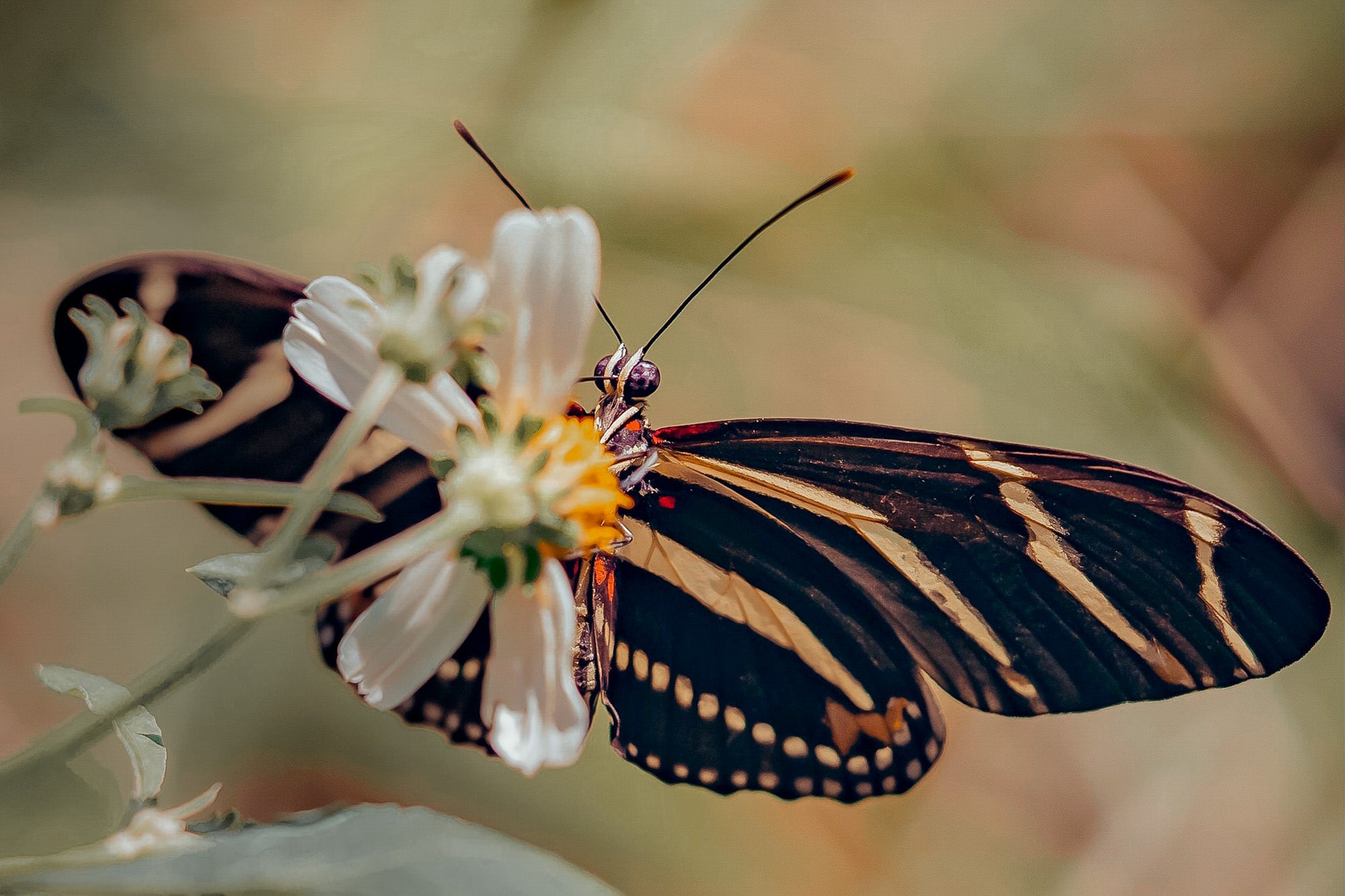
Photo by Hannah Mather. Sony α7 III. Sony 90mm f/2.8 Macro G. 1/2500-sec., f/2.8, ISO 320
Females will lay their eggs in groups on the newest growth of vines. When the caterpillars emerge, they’ll start out dark and as they grow become a striking white with black stripes. When they have matured, they’ll seek out a protected spot under a leaf or branch and spin a silk anchor to hold them while they transform to the next phase, a chrysalis. They do this instinctively by shedding their exoskeleton, revealing their new body beneath. Over the course of a few hours, their new exoskeleton will harden and protect them as they complete their next transformation over the coming days and weeks.
Monarch butterfly, Danaus plexippus
Monarch butterflies, with their famously long migrations, are an iconic butterfly in North America. They’re unfortunately also one of the most at-risk of extinction.
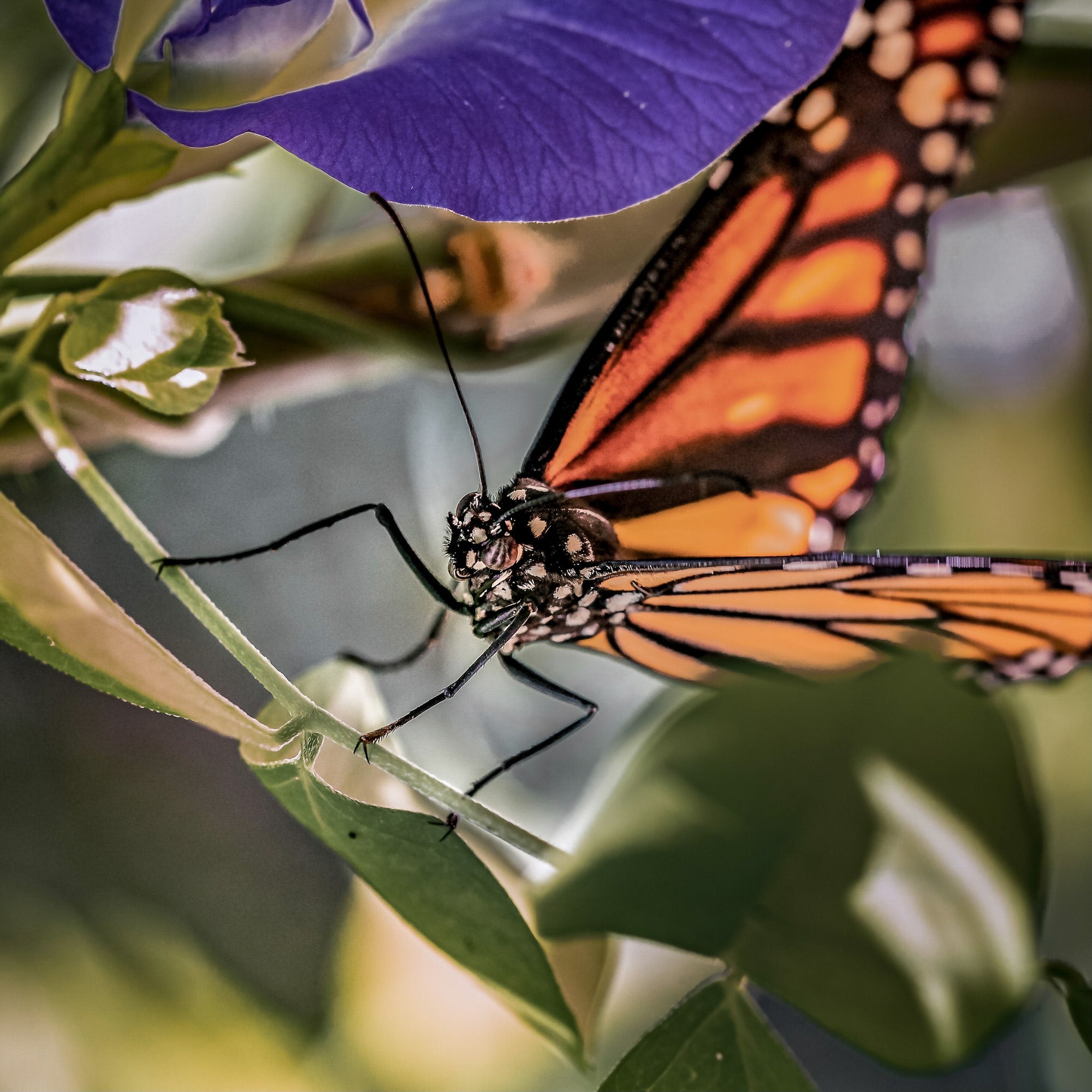
Photo by Hannah Mather. Sony α7 III. Sony 90mm f/2.8 Macro G. 1/250-sec., f/6.3, ISO 800
Because they cover such a wide territory for their migrations, they’re particularly affected by habitat fragmentation. Places they used to stop for sustenance along the way are vanishing, along with the native milkweeds their larvae rely on.
Milkweed plants are the only host for monarch caterpillars. The female butterfly will lay her eggs on the underside of the leaves, and the caterpillar will hatch, eat, and grow in size, accumulating specific toxins from the milkweed along the way, which later help to protect them from predators.
When they’ve eaten their fill of milkweed, they’ll form their chrysalis. They’ll start off a brilliant, reflective green which conceal them well among the leaves, and gradually darken over the next one or two weeks. Right before they emerge, the chrysalis will be nearly transparent with the new wings visible right beneath the surface.
Photo by Hannah Mather. Sony α7 III. Sony 90mm f/2.8 Macro G. 1/125-sec., f/6.3, ISO 3200
When they emerge as adults, their wings are soft, wet, and crumpled. The first thing they must do is pump fluid from their abdomen into the wings to help them expand. Once inflated and dry, a process that can take several hours, the butterfly will be ready to fly off to find nectar and a mate.
Final Thoughts: Take The Next Step To Protect
My hope with this project is for people to take away a new sense of curiosity and respect for things we have been conditioned to ignore or fear for so long. If nothing else, I hope these stories and photos will cause someone to pause a little bit longer by the next unkempt patch of grass they walk by, and notice the wildflowers mixed in and the life it sustains. There is so much beauty in all of these tiny interactions that together create such a big impact. The first step is simply to notice, the next is protecting.
